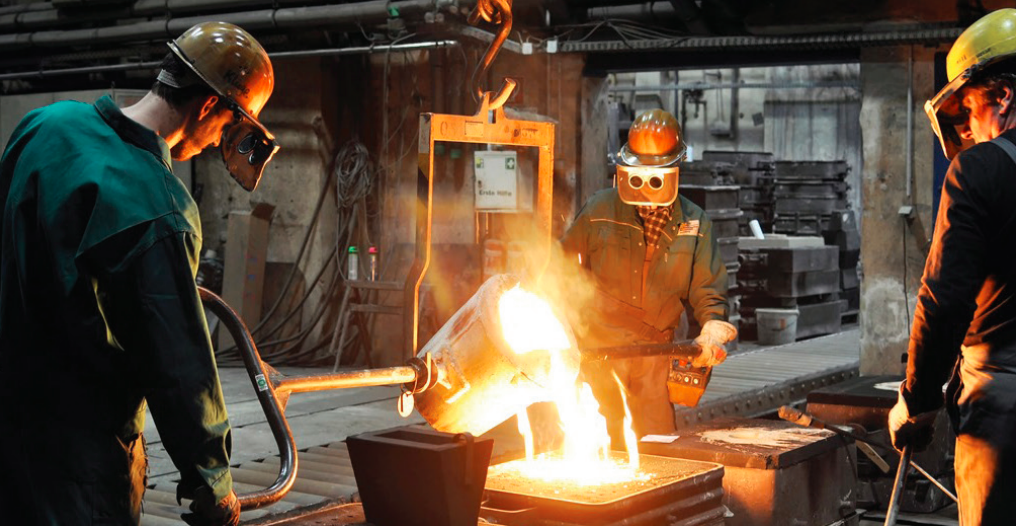Unsafe conditions vs Unsafe acts
Safety can sometimes feel like a hamster wheel–running around and around with the illusion of progress but never actually getting anywhere. You know how it goes: you conduct a safety walkthrough, identify hazards and fix them, only for them to return a month later, when you start the process over again.
Part of the problem is that many managers mistakenly label hazards as unsafe conditions when they’re not, and do the same thing for unsafe practices.
In this post, we’re going to clearly identify the differences between the two, and describe the appropriate measures to address each.

Unsafe conditions
An unsafe condition exists when a person either has no knowledge of the hazard or can’t control their exposure to the hazard.
An example of this is a welder who must bend in an awkward position to weld a stainless steel line underneath a press. He can’t move the press (it’s too big) or perform the work in a more ergonomic way (there’s no room). Since the welder can’t control where the work is performed and the only feasible method risks has a high risk of back strain, this is an unsafe condition.

Unsafe practices or acts
An unsafe act or practice exists when a person recognizes the potential hazard and can control it, but chooses not to do so.
Let’s use the same welder from our previous example. This welder chooses not to wear filtered lenses to protect his eyes while welding. As a result, he experiences flash burn and can’t return to work for two days. The welder knew of the hazard, had the means of preventing it (he had access to eye protection), but made the conscious decision to go without it.
Navigating unclear situations
Sometimes the line between unsafe conditions and unsafe practices isn’t clear cut. Let’s review some common scenarios to better segregate the two situations.
Let’s say you have hazardous environmental conditions like leaking hydraulic fluid. Well, if the leak is known to employees, accepted or ignored, and left as a puddle or stream on the floor, that is not an unsafe work condition. Employees or management chose to leave it there, and no effort was made to clean it up. Likewise, water pooling on the floor from a leaky house isn’t an unsafe condition if the leak has been identified but was not addressed.
Let’s do another common scenario. Injuries caused by a missing guard are not a result of unsafe conditions. Either someone intentionally removed the guard, which is an unsafe act. Even if it vibrated off, if the equipment operator ran the equipment without it, that operator chose to ignore the missing guard and acted in an unsafe way.
What can be done?
In the case of unsafe actions, a quick workplace examination of the equipment, performing LOTO when prescribed, and following task procedures are all easy and effective protection measures, and there’s no excuse for failing to do so.
The numbers show that 75% of all hand injuries are a direct result of the injured person wearing the wrong PPE for the task or not wearing PPE at all. Injuries occur because the person is not protected from the known hazard. These are all human factors.
It’s important to note that the injuries stemming from unsafe acts are not always the front-line employee’s “fault.” One can also blame poorly written procedures, buying the wrong PPE for the task because of management budget choices, or being pressured by a supervisor to skip steps to “save” time. These are all people-based decisions and have the same potential to harm workers.
We have much greater control over our work environment and tasks than we are willing to admit or accept. It’s easier to not take responsibility or be accountable for actions if we can blame the injury on equipment or someone else’s failure and not our practices. Taking control means we recognize the hazard, follow procedures, and wear the prescribed PPE, leading to better protection, fewer injuries, and fewer exposures to the hazards. Being held accountable for safety is no different than being accountable to show up for work.
Improving work conditions
Focusing on personal responsibility and accountability for people to perform tasks correctly will help, but may not be enough. Management should stop pressing employees to work faster, skip procedures, take risks, or simply condoning or ignoring unsafe practices, in general. These are negative practices that will cause real physical and financial harm.
Management must set the tone for being accountable for their employees’ safety. Performance reviews, performance expectations, and performance bonuses hinged on integrating safety into production can help ensure everyone is working together as a team.
Available Solutions
Mechanix Wear is standing by, ready to help you identify risks properly. Through our TRACK program, which includes a free on-site safety assessment and wear trials, you can secure your position with PPE safety experts who can help you protect your team with the right PPE that also keeps your team productive. Register now for free!